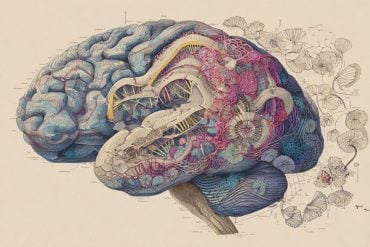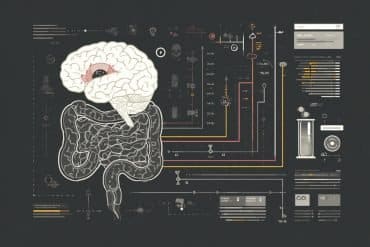Summary: Individuals with the 22q11.2DS genetic deletion show unique patterns of brain activity and structure, which could predict their risk of psychosis. By studying brain “coupling” from childhood to adulthood, scientists discovered discrepancies in brain regions linked to schizophrenia.
These findings pave the way for identifying reliable markers for psychosis risk, aiding early diagnosis and intervention. The research highlights the importance of understanding brain structure and function in psychiatric disorders.
Key Facts:
- 22q11.2DS microdeletion is linked to a high risk of developing schizophrenia.
- Brain “coupling” differences in 22q11.2DS individuals can indicate psychosis risk.
- Study combines brain structure and function analysis for predictive markers.
Source: University of Geneva
Microdeletion of the 22q11.2DS gene is the most common genetic deletion. It affects one person in 2000 and results in the absence of a small DNA sequence on chromosome 22. It can lead to heart defects and immune dysfunction, but also psychotic disorders in adolescence or adulthood in 35% of carriers.
At UNIGE, the team led by Stéphan Eliez, a full professor in the Department of Psychiatry and at the Synapsy Centre for Neuroscience and Mental Health Research in the Faculty of Medicine, has been following a cohort of 300 individuals aged between 5 and 34 affected by this microdeletion for twenty years.
Almost 40% of them have developed schizophrenia. Because of its size and longevity, this Geneva cohort is a unique case study in the world and has led to the publication of numerous articles.
Atypical brain development starting in childhood
In a new study, the UNIGE team looked at the development of ‘‘coupling’’ between the brain regions of the individuals in this cohort, from childhood to adulthood.
‘‘Our cognitive processes are the result of interactions – or ‘couplings’ – between our different brain regions,’’ explains Silas Forrer, a PhD student in Stephan Eliez’s team and first author of the study.
‘‘We wanted to find out whether, in individuals with the 22q11.2DS anomaly, less efficient coupling was synonymous with an increased risk of developing psychosis.’’
This brain ‘‘synchronisation’’, and especially its optimisation, develops during adolescence and into adulthood. Using magnetic resonance imaging techniques, the neuroscientists observed its maturation over a period of twelve years within the cohort and a control group.
‘‘We found that patients with the microdeletion had a persistent developmental discrepancy since childhood, with regions of hyper- and hypo-coupling throughout the brain,’’ says Silas Forrer.
This discrepancy is particularly marked in adolescence in three brain regions in ‘‘22q11.2DS’’ individuals who have developed schizophrenia: the frontal cortex, responsible for voluntary motor coordination and language; the cingulate cortex, at the interface between the two hemispheres of the brain, responsible for making certain decisions; and the temporal cortex, responsible for somato-sensory functions. There is hypo-coupling in the first two and hyper-coupling in the third.
Towards identifying a reliable marker
This strong correlation between developmental discrepancy and microdeletion of the 22q11.2DS gene is a significant step towards identifying predictive markers for the disease.
‘‘The next step will be to determine how these couplings can constitute an individual ‘fingerprint’ of the brain, making it possible to clearly know whether an individual is more at risk than another of developing psychosis, or conversely, is protected from it,’’ explains Stephan Eliez, who led this study.
This research, funded by the Swiss National Science Foundation (SNSF), is also a methodological innovation by combining observations on both the structure (morphology) and function (efficiency) of the brain to assess the developmental trajectory of a population in the context of psychiatric illnesses.
About this psychosis research news
Author: Antoine Guenot
Source: University of Geneva
Contact: Antoine Guenot – University of Geneva
Image: The image is credited to Neuroscience News
Original Research: Open access.
“Longitudinal Analysis of Brain Function-Structure Dependencies in 22q11.2 Deletion Syndrome and Psychotic Symptoms” by Silas Forrer et al. Biological Psychiatry Cognitive Neuroscience and Neuroimaging
Abstract
Longitudinal Analysis of Brain Function-Structure Dependencies in 22q11.2 Deletion Syndrome and Psychotic Symptoms
Background
Compared with conventional unimodal analysis, understanding how brain function and structure relate to one another opens a new biologically relevant assessment of neural mechanisms. However, how function-structure dependencies (FSDs) evolve throughout typical and abnormal neurodevelopment remains elusive. The 22q11.2 deletion syndrome (22q11.2DS) offers an important opportunity to study the development of FSDs and their specific association with the pathophysiology of psychosis.
Methods
Previously, we used graph signal processing to combine brain activity and structural connectivity measures in adults, quantifying FSD. Here, we combined FSD with longitudinal multivariate partial least squares correlation to evaluate FSD alterations across groups and among patients with and without mild to moderate positive psychotic symptoms. We assessed 391 longitudinally repeated resting-state functional and diffusion-weighted magnetic resonance images from 194 healthy control participants and 197 deletion carriers (ages 7–34 years, data collected over a span of 12 years).
Results
Compared with control participants, patients with 22q11.2DS showed a persistent developmental offset from childhood, with regions of hyper- and hypocoupling across the brain. Additionally, a second deviating developmental pattern showed an exacerbation during adolescence, presenting hypocoupling in the frontal and cingulate cortices and hypercoupling in temporal regions for patients with 22q11.2DS. Interestingly, the observed aggravation during adolescence was strongly driven by the group with positive psychotic symptoms.
Conclusions
These results confirm a central role of altered FSD maturation in the emergence of psychotic symptoms in 22q11.2DS during adolescence. The FSD deviations precede the onset of psychotic episodes and thus offer a potential early indication for behavioral interventions in individuals at risk.







